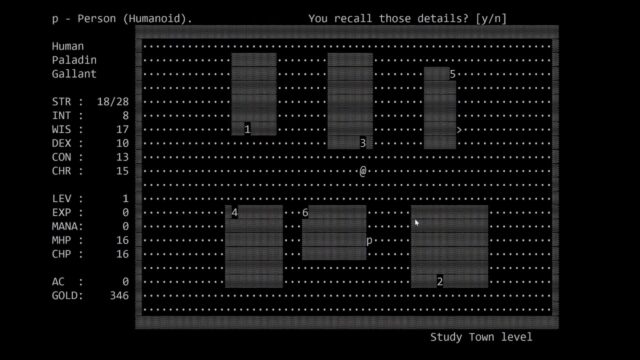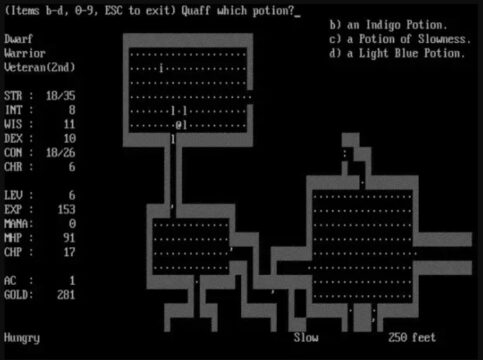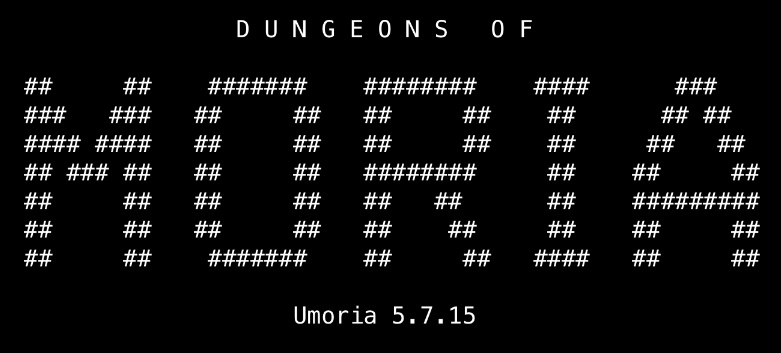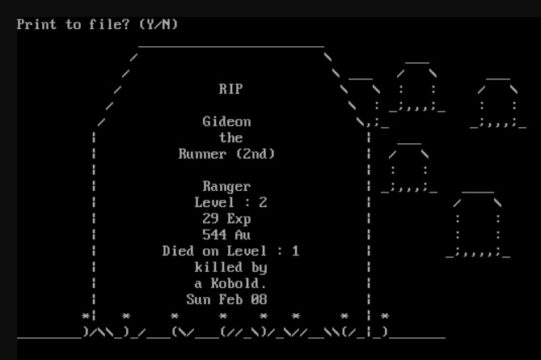The Dungeon of Moria Really, Really Retro Review
As I sit here, late in March in the year Two Thousand Twenty-Four, I have to wonder how I’ve gotten this far in my gaming life. I have almost four full decades of game experience behind me now, for often better and occasionally much worse, but it all had to have its start somewhere. Looking back at the games that shaped my childhood, one in particular stands out. It was a fixture of my early elementary school existence, and it taught me a great many things about life in general and gaming in particular. Nearly forty years after the fact, I can say that it was one of the best games I’ve ever played.
Of course, I am speaking of The Dungeons of Moria.
For those who have never had the pleasure, Moria was one of the first roguelike games, back in a time when the original Rogue was the big game in town. A computer science professor named Robert Alan Koeneke at the University of Oklahoma, circa 1983, was disappointed, however. He’d just been moved to a new department with awesome new computer systems which, though state of the art, could not play Rogue. So like any good first-generation gamer, he went and programmed his own homage, continuing to develop and improve it over the years with likeminded collaborators, including open-source and the Computer Science majors at the University of Oklahoma, and bringing it to a broader range of operating systems. The result, the version labeled UMoria 5.0, was one of many games my father and I downloaded via Torii Station, one of the old BBS (and if you know what those were from personal experience, then let us enjoy the old gamer life together).

A genre first: the nameless base town situated over the dungeon of Moria. None know how deep it goes, but all are ready to take the adventurer’s coin.
How can I do justice to this game when I speak of how it impacted my young life? In many ways it was at the peak of game design in the 1980s, sporting the best in ASCII graphic figuration. Everything in the game had a letter, number, or non-alphanumeric symbol associated with it, giving easy and immediate identification of the general sort of things in the environment. There was no clutter or confusion, no low resolution or blurring with the crisp dot matrix of the CRT monochrome monitors. What you saw was what you got, and that bare truthfulness, that graphical sincerity, was well-suited for a game that could be quick to learn and eternally long to master.
The things that it taught me! At the precocious age of nine years and a couple of months, I was learning strange new synonyms for words that I didn’t know existed before then. Moria‘s reliance on single-letter hotkey commands meant that it had to be creative in naming its actions, and thus my vocabulary expanded boundlessly. One did not merely drink a potion; one [q]uaffed it. Scrolls might be [r]ead, but spellbooks needed to be [p]erused. When shopping, it was necessary to [h]aggle for a better price, though at a risk of getting firmly ejected from the store.

In the dungeon, the adventurer encounters a swarm of giant lice. Foolishly, he wastes time quaffing a potion, rather than running away in terror of their exponential threat.
Moria taught me more colors than the rainbow would allow, shades and hues with names like chartreuse, vermilion, or puce, with qualifying adjectives that made potions effervescent and pretty lights all coruscating or scintillating. It gave lessons on the need to make careful observations and experiment with different tastes, because one never knew if the next potion was the juice of the apple or the slime mold, a healing draught or a bottle of salt water, until the hero took a sip.
Some lessons came the hard way. From Moria, I learned about things like the problem of exponential growth (those damn giant lice…) and how to deal with such problems before they spiraled out of control (nuke the room or run to the nearest staircase ASAP). I saw firsthand the economic realities of inherited wealth, re-rolling my stats over and over to score a higher social ranking for my character, and thus more starting cash, while some choices of heritage would never rise above being slightly richer than dirt.
The story of Moria also showed great wisdom, in that it realized that there was no need for story, merely justification. There is the player, there is the fixture of a town as home base, there are the unplumbed depths of the endlessly expansive Moria underworld, and there is the Balrog, lurking in the darkness. No more is needed; anything else would detract from the raw essence of the Hero’s Journey as the newly christened adventurers rise from their humble origins even as they descend into danger, gaining newfound mastery over the skills of magic and might and overcoming the dankest of dungeon denizens.
Success is never a given, and victory cannot be guaranteed. Moria‘s final lesson to me, age nine years and a couple of months, was that the struggle was important, that one needed the will to overcome insurmountable odds but also the acceptance of failure when those odds did in fact prove to be insurmountable. That one need pick oneself up by the metaphorical scruff, dust off a new set of stats, and try again, in an ever-going quest to do better next time, to reach a deeper level of the dungeon or destroy a stronger sort of monster. While I never faced the Balrog myself, the attempts to do so gave me the patience to deal with simpler games with more complicated goals, to figure out the means of success and victory in situations where the odds were not so dire, and to be the best gamer I could be.
And for this, Moria shall ever be a five out of five, gold-star game to me.
Disclaimer: If not already apparent, this was posted on April Fools’ Day.


Peak 1980s game design
First roguelike ever to have a base town
Well-developed character roller
Open Source since 1985
Limitless hours of dungeon-delving
Downloadable to darn near everything, or playable through one's browser
Nothing
Not a thing at all
Really, wouldn't change one iota, jot, or tittle
What is a tittle, anyway?
Can it be [q]uaffed, [e]tched, or [p]erused?







best game evar.
Jot and tittle refer to the smallest of marks made when writing in Hebrew. Like dotting an I.
And agreed, if it wasn’t for these games, RPGs wouldn’t exist today.